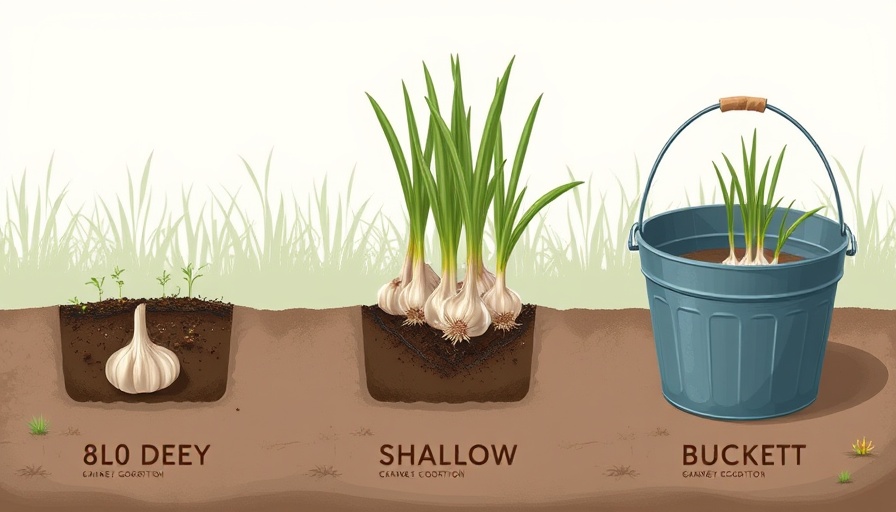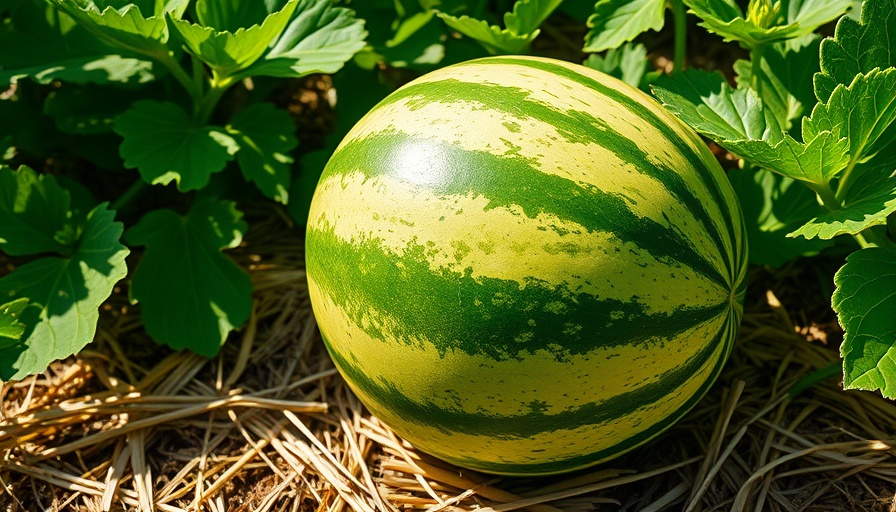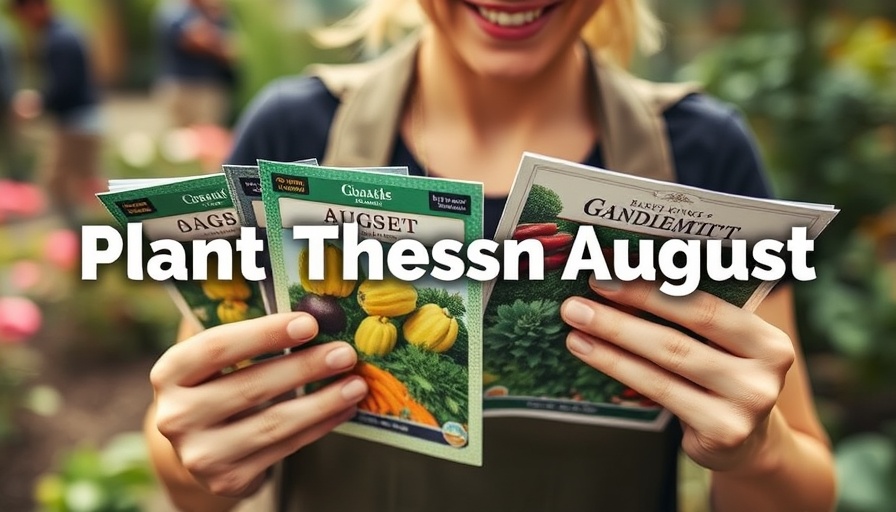
Unlocking the Secrets of Garlic Growth: An Urban Gardener's Guide
Garlic has long been a favorite among gardeners, revered for its culinary prowess and health benefits. With rising interest in home gardening, especially in urban settings, many in Metro Vancouver are keen on maximizing their small spaces. This brings us to a fascinating garlic growth experiment conducted by Kevin Spiritu and his friend Jacques, who tested seven different methods for cultivating garlic, aiming for optimal yield and quality.
In We Grew Garlic 7 Different Ways, Here's What Happened, the discussion dives into innovative garlic planting techniques, exploring key insights that sparked deeper analysis on our end.
Understanding Garlic Requirements: Preparing Your Soil
One of the core lessons from Spiritu's experiment is the importance of soil preparation. The right soil is essential for healthy garlic growth. Loose, fertile soil, enhanced with compost and organic fertilizers, sets the stage for robust growth. Whether you're in a small backyard or a balcony garden, investing time in preparing your soil can significantly influence your garlic harvest.
Different Depths: What Works Best?
The team started with a control method, planting garlic cloves three inches deep, with six inches between each. They also experimented with shallow (one inch) and deep (six inches) planting. Interestingly, the shallowly planted garlic initially appeared more vigorous. This suggests that for those without much space, planting garlic at a shallower depth may encourage quicker growth, which is crucial for urban gardeners who might be seeking immediate results.
The Spacing Debate: Tight vs. Loose Planting
Another key aspect was spacing. Planting cloves just three inches apart led to no noticeable competition early on, allowing for a denser planting in limited spaces. For those gardening in Metro Vancouver’s smaller plots, tighter spacing might mean maximizing the number of crops harvested without sacrificing quality. In contrast, the widely spaced garlic—nine inches apart—didn't have a significant yield difference but provided more room for each plant's growth.
Experimenting with Different Methods: Soaking and Whole Bulbs
In addition to depth and spacing, Jacques and Kevin tested soaking garlic cloves in a solution of hydrogen peroxide and organic fertilizer before planting. This method seemed to yield promising results, potentially reducing disease risk while providing an initial nutrient boost. On a whim, they also buried whole heads of garlic, and surprisingly found this method excelled, yielding clusters of bulbs with a unique harvest that can spark curiosity among gardeners.
What the Results Mean for Urban Gardeners
The experiment's conclusions are particularly relevant for those living in urban areas, where each square foot counts. The findings suggest that urban gardeners might benefit from experimenting with planting techniques like tightly spacing cloves or even trying whole heads of garlic to maximize yield. As these methods also contribute to soil health, they align with eco-friendly practices that many small-space gardeners embrace.
Start Your Garlic Journey Today!
As the gardening trend continues to grow in urban areas, this garlic experiment highlights practical, actionable insights. Whether you're new to gardening or looking to optimize your small space, these findings encourage exploration and offer ways to innovate your planting strategies. Don't hesitate—grab some garlic cloves and get started on growing the biggest harvest possible!
 Add Row
Add Row  Add
Add 




Write A Comment